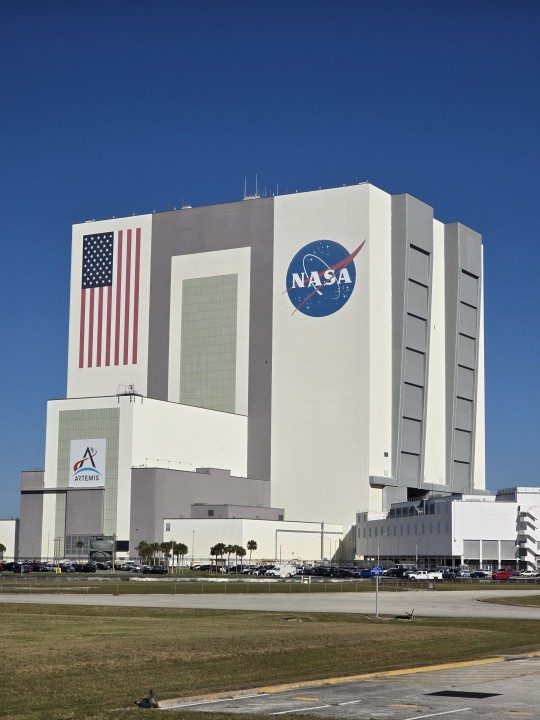#Falcon 9
Explore tagged Tumblr posts
Text

SpaceX Falcon 9 Launch l Lori Grace l June 2024
#spacex#falcon 9#rocket launch#photography#astrophotography#astronomy#nasa#sky#stars#night#SES satellites#solar system#planets#galaxy
609 notes
·
View notes
Text

Comparing US commercial launch vehicles: Falcon 9, Falcon Heavy, New Glenn and Starship
60 notes
·
View notes
Text

53 notes
·
View notes
Text

#department of government efficiency#elon musk#melania trump#donald trump#2024 presidential election#ivanka trump#president donald trump#barron trump#republicans#tiffany trump#starlink#usa#cnn#falcon 9#bitcoin#us politics#us army#us navy#us armed forces
90 notes
·
View notes
Text




Currently having an incredible time at the @nasa Social experience for Crew 10! We've had the opportunity to speak to some truly awesome people who support launches, facilities, and public affairs, and everyone has such a passion for what they do here. I can't wait to tell you all more!
32 notes
·
View notes
Text

Poem: Twas the Day After Christmas
Jason Whitham 2024
Twas the day after Christmas,
And I was on my way back.
When I was T-boned by SpaceX,
A Falcon Nine Black.
There was just enough time,
To loose the reindeer before impact.
Only microseconds to eject,
Before being charred by the jetpack.
Everyone, free of injury,
Was a wonderful Christmas grace.
Lord knows what I’ve sustained,
From rooftop falls to a sealed fireplace.
Still, my ride was busted,
Wires melted and thrusters wrecked.
How could I get it back to base?
Rubble was good for no one but rubbernecks.
My insurance broker was out of office,
The app down for claims.
So I wiped all the computer drives,
Before scuttling the sleigh.
The Lyft bill was quite hefty,
The narwhal ride expectantly wet.
At least the Polar Express was smooth,
I set the autopilot and slept.
Easy enough when you're dead tired,
And the sun doesn’t rise high.
Between September and late March,
Only northern lights illuminate the sky.
When I arrived at the NP,
Elves were already in the boozy cocoa.
Not needing to winterize the sleigh,
Meant a quicker path to getting Fireball loco.
Rudolph worried the Mrs.,
She exclaimed, “Are you okay?”
“We can write it off on taxes,” I replied,
“Or Musk will have to pay.”
I threw off my belt and coat,
And kicked off the big red boots.
Dismissed the staff, made a pass,
And had jolly, cheerful rendezvous.
“I apologize for my Nick’s rudeness.”
“It gets him so randy.”
“What the frigid night air?” asked Frosty.
“No, the cookies and candy.”
While the Mrs. tossed the stale ones,
And sent FedEx thank-yous to the kids,
I checked the sports spreads,
And placed my over/under bets and bids.
I relayed the competitive intel,
To my elves in the toy department.
It surprised them to hear drones were out,
And augmented/VR was in every apartment.
We finished our work reports,
And hurried outdoors.
To compete in the Christmas tree toss,
And skirmish in epic snowball wars.
At the annual festive feast,
They jeered during my appreciation speech.
“Keep it short and sweet, Nick!”
“No one likes to hear you preach!”
I started reflecting on this year’s successes,
Our challenges and wins.
Made some jokes about global politics,
Which rallied big laughs and grins.
What seemed to be most popular, though,
Were my New Year’s resolutions.
Actually, I think it was my promise,
For bigger bonus contributions.
I finished with my crowd-pleaser,
Declared and dropped the mic.
“Merry Christmas to all!” I exclaimed.
“And to all a Good Night!”
Attribution:
Picture generated with the help of OpenArt.
#action#merry christmas#merry xmas#comedy#poetry#santa claus#saint nicholas#saint nick#night before christmas#spacex#falcon 9#augmented reality#virtual reality#new year#happy new year#new years eve#christmas
12 notes
·
View notes
Text

SpaceX Merlin 1D liquid rocket engine.
9 notes
·
View notes
Text

the early days
13 notes
·
View notes
Text
15 notes
·
View notes
Text




Sometimes when I'm birdwatching
(launch video)
14 notes
·
View notes
Text

Falcon 9 over the Moon l John Kraus
#moon#rocket launch#falcon 9#spacex#astrophotography#astronomy#space#universe#stars#sky#solar system
887 notes
·
View notes
Text

Crew-10 launches to space station
21 notes
·
View notes
Text

Falcon 9 rocket doing it's thing
#animated gif#animated gifs#gif#gifs#old advertisements#old ads#retro#vhs#spaceX#rocket#falcon 9#explosion#kaboom
17 notes
·
View notes
Text

Napoleon Trump
#Donald Trump#elon musk#napoleone#napoleon#falcon 9#spacex#pusa#USA#Canada#President#invasion#war#Creative America#Napoleon Trump#matt#matteo paolelli#pencil#pencildrawing#caricature#caricaturedrawing#noai
8 notes
·
View notes
Text





Got to spend some unique moments today as part of the @nasa social event with the Falcon 9 and Crew Dragon Endurance that will be ferrying Crew 10 to the International Space Station. Named for the resilience of the NASA team and in honor of the ship at the heart of Shackleton's Antarctic expedition, Endurance will carry US astronauts Anne McClain and Nichole Ayers, JAXA astronaut Takuya Onishi, and Russian Cosmonaut Kirill Peskov.
The first image shows the Falcon 9 on its side, before being lifted by the transporter erector, which will support the vehicle until launch.
#nasa#space program#commercial crew program#spacex#falcon 9#crew dragon#crew dragon endurance#crew 10#nasa social#international space station
12 notes
·
View notes